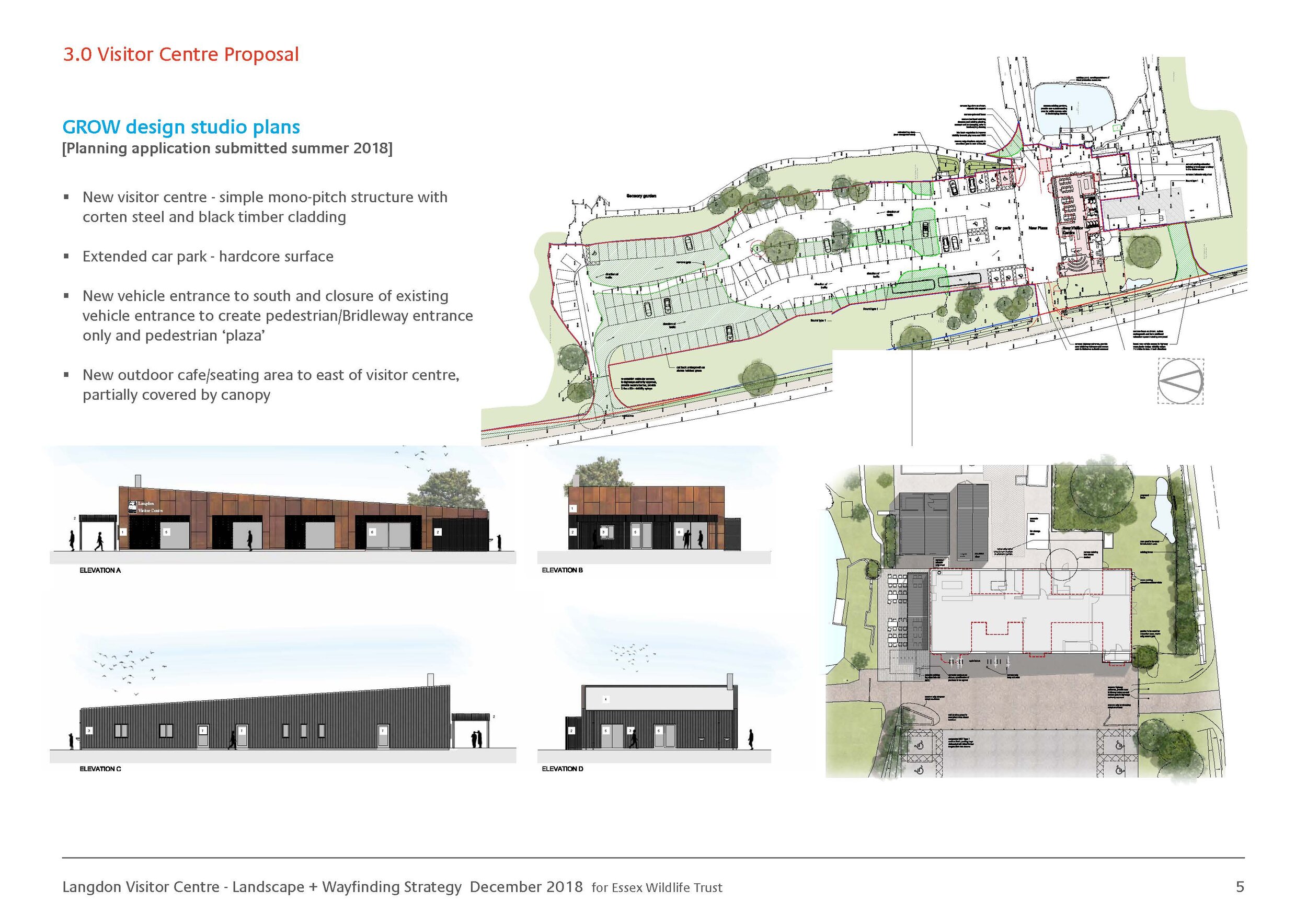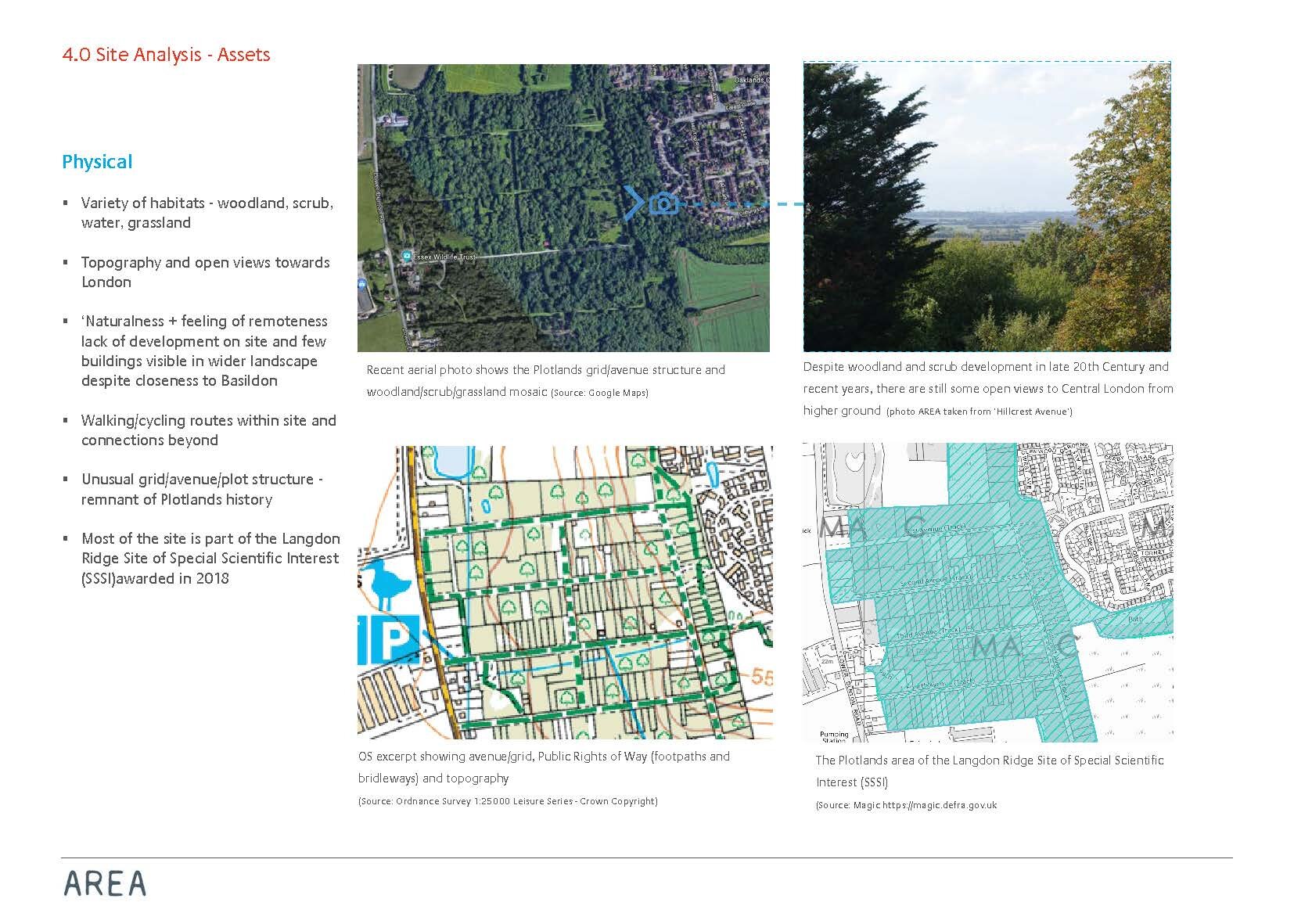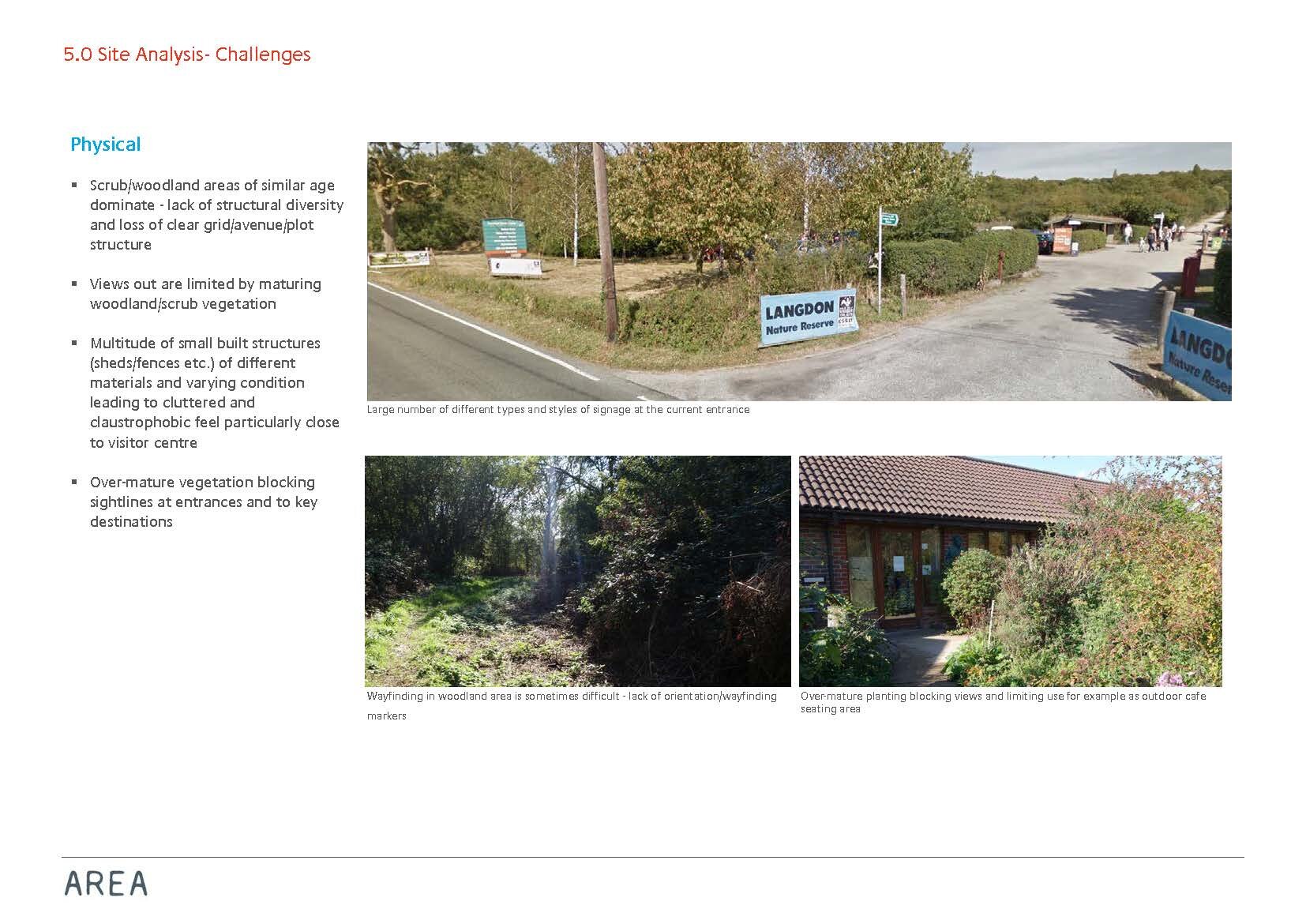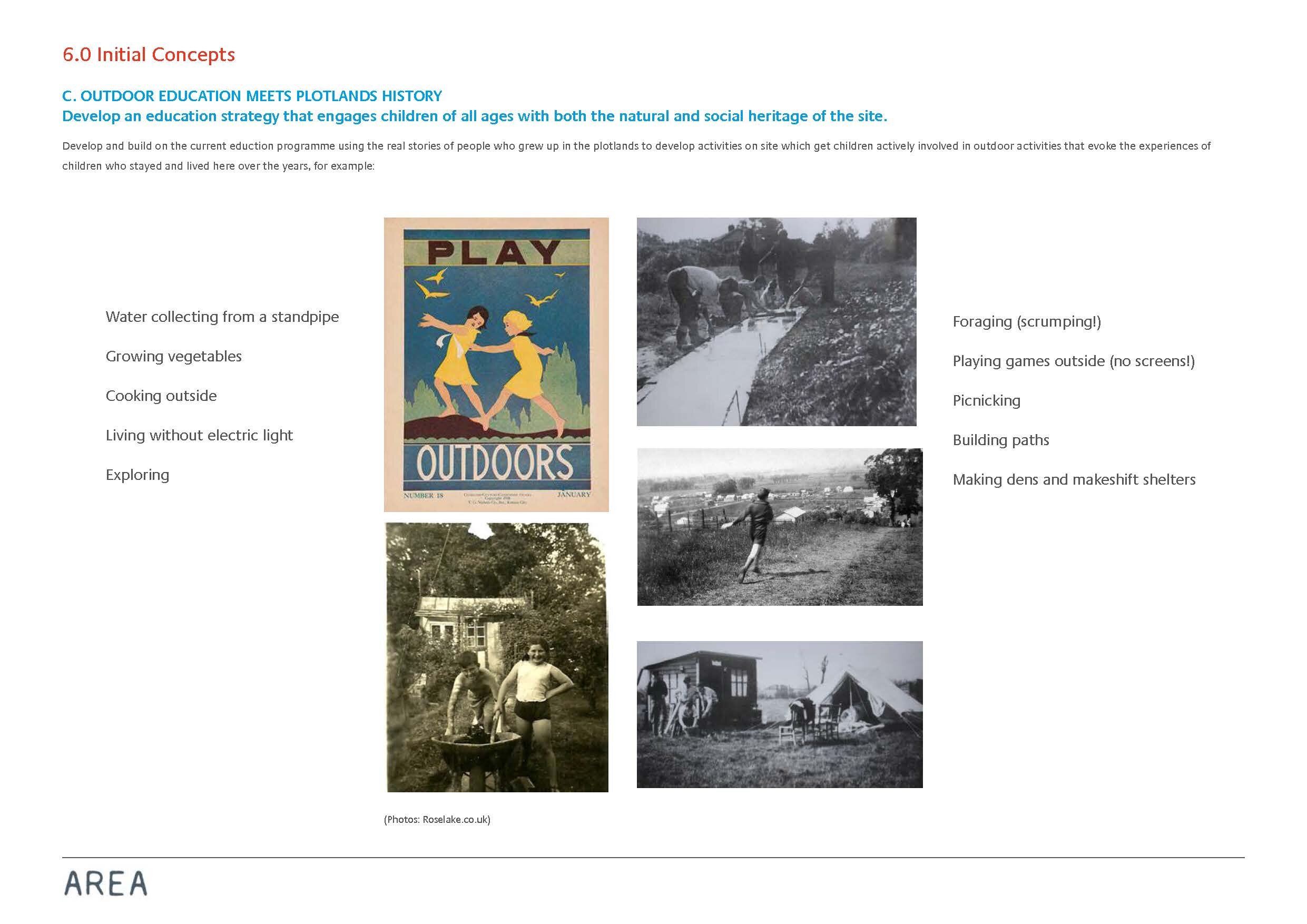
LANGDON VISITOR CENTRE.
Chelmsford, Essex
Our brief includes developing a new wayfinding strategy to increase people’s access to and enjoyment of the wider site; to encourage them to visit more often and to stay longer, and to engage more deeply with the unique natural and cultural heritage.
Client: Essex Wildlife Trust
Context
AREA landscape architects have been commissioned to develop design ideas for the outside associated with the new visitor centre at Essex Wildlife Trust’s Langdon Nature Reserve. Langdon Visitor Centre is set in 461 acres of countryside close to Basildon in Essex. The reserve comprises of woodland, meadows, lakes and the former Dunton Plotlands.
The nature reserve occupies some of the highest land in the county and has commanding views over the surrounding countryside. There is a wide network of walks and bridleways and an abundance of wildlife and habitats. The combined natural and social heritage resulting from the site’s unique history make this a fascinating destination of local and wider significance.
Concept
Our brief includes developing a new wayfinding strategy to increase people’s access to and enjoyment of the wider site; to encourage them to visit more often and to stay longer, and to engage more deeply with the unique natural and cultural heritage. Key concepts included:
Enhancing/revealing the lost Plotlands grid and avenue structure to support wayfinding and engagement.
Use wayfinding devices such as street naming (using the plotlands era names), revealing additional former house plots in strategic locations by maintaining or replanting garden hedges, introduce picket fences, garden gates with original names, rose arbours etc.
Strengthen habitat ‘mosaic’ within the Plotlands grid structure through management. Enhance woodland/scrub/grassland mosaic structure to create more visual diversity and improve biodiversity. This also improves sightlines and orientation within the site.
Develop an education strategy that engages children of all ages with both the natural and social heritage of the site. Develop and build on the current eduction programme using the real stories of people who grew up in the plotlands to develop activities on site which get children actively involved in outdoor activities that evoke the experiences of children who lived in the area.
Landscape Plan - Visitor Centre Courtyard, Cafe Terrace + Education Garden Detail
Visitor Centre Entrance Courtyard. Cafe Terrace and Education Garden - Illustrative Sections


















